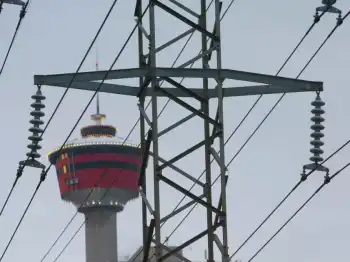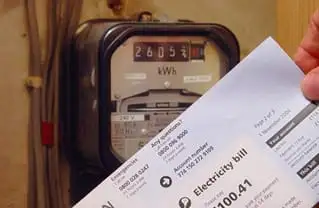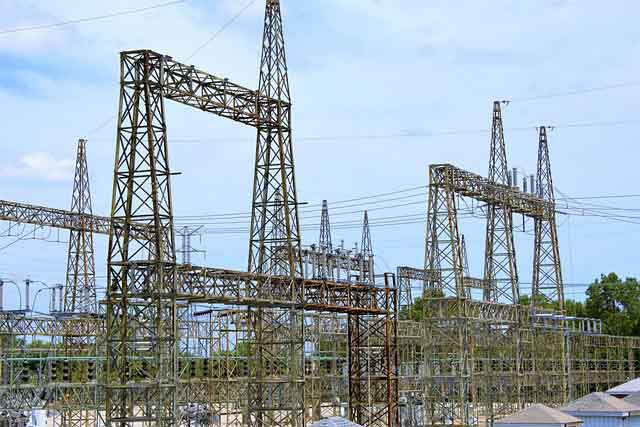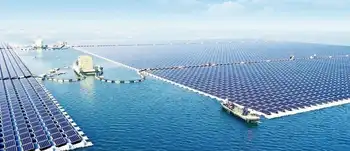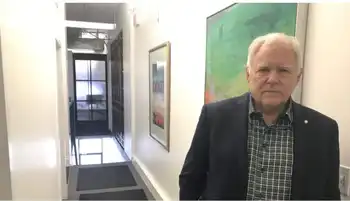Georgia Power offers conservation tips
By PR Newswire
NFPA 70e Training
Our customized live online or in‑person group training can be delivered to your staff at your location.

- Live Online
- 6 hours Instructor-led
- Group Training Available
Here are some of their tips to keep you cool and comfortable as the temperatures heat up.
During the summer, your air conditioner is usually the biggest user of electricity. For many homes, it accounts for more than half of the summer electric bill.
• Set your thermostat at 78 degrees or higher and leave it there. For every degree below that setting, you'll use 3 to 4 percent more electricity. For example, the savings is about $4 per degree on the typical monthly residential bill for cooling only.
• Set the thermostat even higher when at work or away from home for long periods of time, but no more than five degrees higher.
• Even better, invest in a programmable thermostat that automatically adjusts your home's temperature to your schedule, so you're comfortable when at home and save energy while away. They work best for homeowners who have consistent schedules.
• Change or clean your air conditioner filter regularly to maximize the unit's cooling potential. Dirty filters restrict airflow and reduce efficiency.
• Keep air vents clear of obstructions to help your heating and cooling system operate more efficiently.
• Check your windows and doors for a tight fit. Apply weather stripping or caulking if needed.
• Clear outside units of plants or brush so they can work more efficiently.
ENERGY STAR Appliances
• Look for the ENERGY STAR brand when purchasing new appliances.
• Purchase an ENERGY STAR or high-SEER-rated unit when replacing cooling equipment or a heat pump. The higher the SEER (Seasonal Energy Efficiency Rating), the more efficient the unit. Experts recommend at least a 13 SEER.
• ENERGY STAR-rated appliances, such as refrigerators and dishwashers use 10 to 50 percent less energy and/or water when compared to standard appliances.
Proper insulation
• Increasing attic insulation can reduce heat loss / heat gain by up to 28 percent.
• Insulation is measured in R-value, which is a measure of resistance to heat flow. The higher the R-value, the better the insulation value.
• Experts recommend you use an R-value of R-30 or higher, depending on local energy codes, in ceiling areas.
Cool kitchen tips
• Use pots and pans that match the size of the burners on your stove. This allows more heat to reach the pan and less heat will be lost to surrounding air.
• Try to use the range instead of the oven. Or better yet, turn on the microwave or use a pressure cooker. Both use less power than a standard electric range.
• Whenever possible, cook a lot of meals at the same time. This uses less energy than cooking each meal separately.
• Avoid opening the oven door. This lets out 20 percent of the heat.
Using the refrigerator
• Look for the ENERGY STAR label when choosing a new refrigerator. Refrigerators manufactured prior to 1993 use twice as much energy as today's models.
• Choose the right size refrigerator for your needs. Larger models use more energy. Open and close the refrigerator door quickly. Know what you want before opening the door.
• Make sure your refrigerator door seals are airtight. Check them by closing a piece of paper in the door, half in and half out. If you can pull the paper out easily, you may need to make some adjustments or replace the seal.
• Allow air to circulate around the condenser coils of your refrigerator or freezer by leaving a space between the wall or cabinets and the appliance. Be sure to keep the coils clean.
• Set the refrigerator thermostat to between 35 and 38 degrees, and your freezer at zero degrees.
Clothes washer/Dishwasher
• Turn down your water-heater thermostat. A setting of 120 degrees is adequate for most homes and will save money and energy.
• When using the dishwasher, turn off the drying cycle if you don't need dishes right away.
• Wait until the dishwasher is full before running it. Partial loads use just as much water and power as a full load.
• Scrape dishes before loading them into the dishwasher so you don't have to rinse them. If they need rinsing, use cold water.
• Wash full loads of clothes.
• Dry clothes in consecutive loads so the dryer does not have to reheat every time. Separate loads into heavy and lightweight items for more even drying, and remove clothes while they're still slightly damp. Always clean the lint filter after each load.
Lighting
You've heard it before, but one of the best ways to save energy is to turn off lights when you're not using them. Never leave too many on when you're away from home. • Change the most-used lights in your home to ENERGY STAR qualified compact fluorescent (CFL) bulbs — they use 75 percent less energy than standard lighting and last up to 10 times longer. Also, ENERGY STAR qualified CFL bulbs generate 75 percent less heat which means your air conditioner works less, which lowers your electric bill. And they can produce four times more light than standard incandescent lamps, for the same amount of energy.
• Use one large bulb instead of several small ones in areas where bright light is needed.
• Use smaller lamps in work areas, like sewing areas and computer desks, so you don't light the entire room.
• Do some decorating. Lighter-colored walls, drapes, blinds and upholstery reflect light. Dark colors absorb heat and require more artificial light.
Just for Comfort
• Use fans whenever possible. Ceiling fans can make the air in a room feel 6 degrees cooler and allow you to save energy. Remember, however, to turn them off when you're not in the room.
• Run the dishwasher, dryer and stove in the morning or after the sun goes down to avoid adding heat to your house during the hottest part of the day.
• Use a power strip or simply unplug electronics when they are not in use and save as much as $100 a year.






